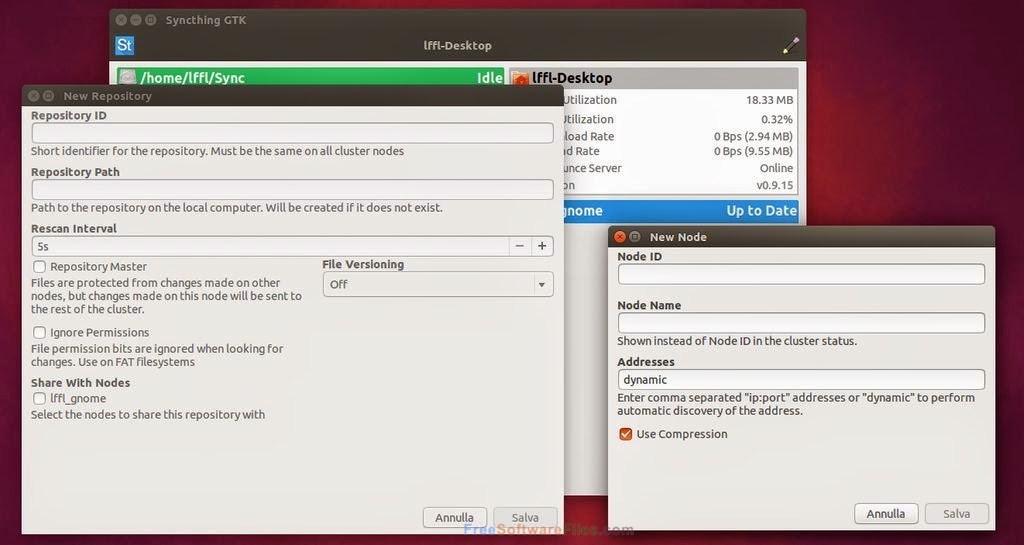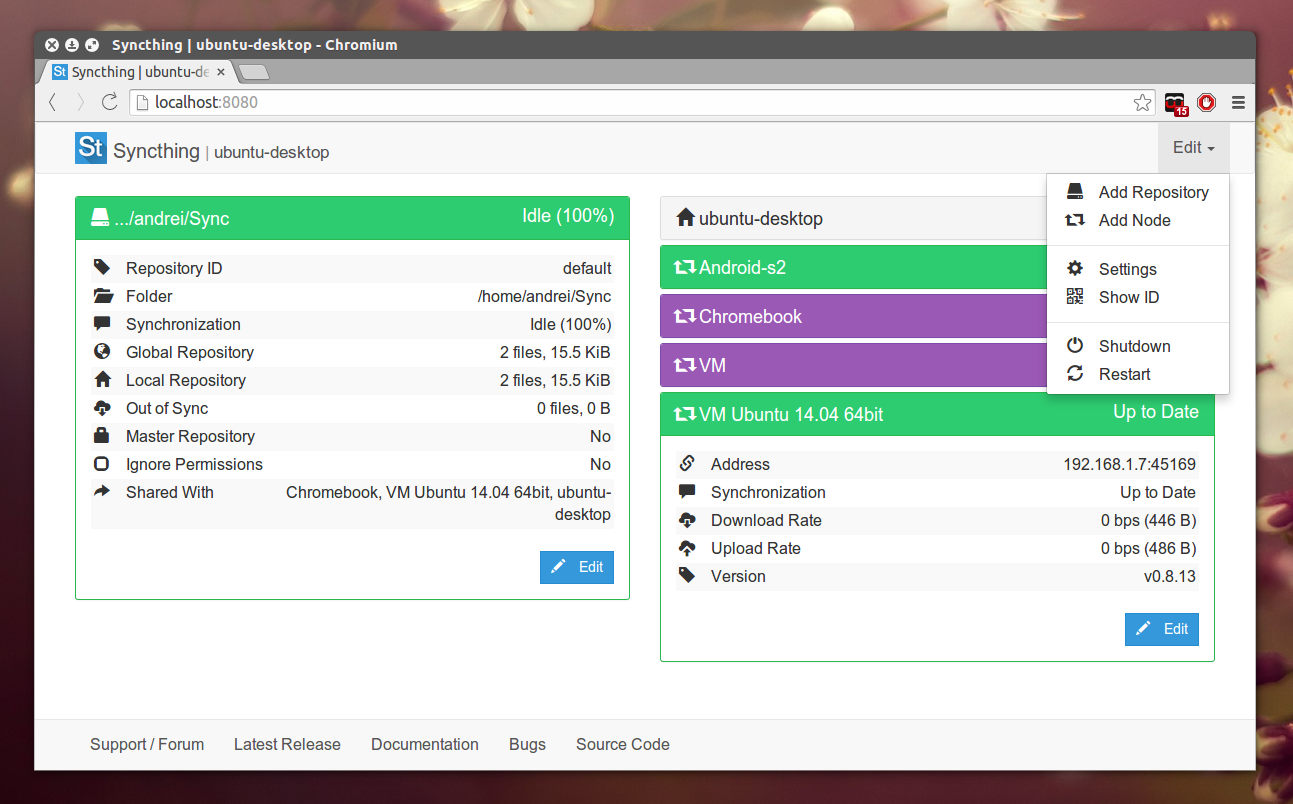

- #SYNCTHING FILE VERSIONING ARCHIVE#
- #SYNCTHING FILE VERSIONING FOR ANDROID#
- #SYNCTHING FILE VERSIONING PC#
- #SYNCTHING FILE VERSIONING WINDOWS#
File versioning saves versions of a file to a backup folder automatically. If necessary, you can exclude subdirectories from synchronization using the menu item Ignore Patterns. Syncthing is a open source file syncing program that makes it easier for computers to share files between them. Syncthing also allows versioning for shared folders, which is ideal for a server.
#SYNCTHING FILE VERSIONING WINDOWS#
SyncTrayzor : Windows tray utility, filesystem watcher & launcher. These are good starting points if you are a new user unfamiliar with Syncthing, or not prone to loving the command line.

Next, select the Syncthing devices with which this directory will be synchronized in Share With Devices. These are some popular and user friendly OS integrations, providing things like system tray icons, file browser integration, etc. If the data for the added folder is on a filesystem with no administrative rights (e.g., FAT), you can make sure that the changes to file permissions fall by the wayside using the Ignore Permissions option. Duple states: Syncthing is P2P, so you get the disadvantages along with. An external command writes the backup copy for external versioning. like Syncthing with an always-on client - except for the file versioning. Even the expiration date for versioned copies can be determined in the Staggered versioning variety. Syncthing enables the sharing of folders on your computer in a peer-to-peer manner. Once that was complete, everything was in sync and we were ready to go. Depending on your needs, you can either completely forgo backups or use a Simple versioning in which Syncthing keeps a fixed number of copies of deleted or changed files in the hidden directory. Once Syncthing was set up on all of our machines, it scanned the files and communicated with the other peers to make sure everyone had the same content. However, Syncthing does not utilize the cloud at all it is a peer-to-peer file synchronization tool. It primarily works through a web UI on Linux but also offers a GUI (to separately install).
#SYNCTHING FILE VERSIONING FOR ANDROID#
Syncthing provides different modes for creating and organizing backups of data managed using Syncthing under the File Versioning item. Syncthing lets you sync your files across multiple devices (including the support for Android smartphones). If necessary, load all directories concerned by clicking Check All ( Rescan All) at any time. You can, by all means, extend the predefined rest period of 60 seconds on inefficient systems.


The Search Interval option ( Rescan Interval in current versions of the application) determines how often Syncthing searches for new or changed data. A file only disappears from other devices once it has been deleted in one of the protected folders. However, Syncthing still transfers changes made on this device to the rest of the network. If you enable this setting, Syncthing protects the corresponding folder against changes made on other devices.
#SYNCTHING FILE VERSIONING PC#
As a result, the red button Override Local Changes appears on PC A. Then on PC B, the file Foo is changed and the file Bar is added. The Folder Master option stands out among the other settings. Assume a folder is set up on PC A as Send Only, and on PC B as Send & Receive with Simple File Versioning. The respective target directory can, however, have a different name on each device.įigure 5: Syncthing automatically creates backups using File Versioning. The directory must be set up on all computers, and the ID must be identical. However, when larger volumes of data need to be synchronized, you can add further folders with their own settings to the Syncthing configuration.Īfter clicking Add Folder or Add Shared Folder from the Syncthing GTK menu ( Figure 5), enter the folder's unique name in the dialog for Folder ID and then navigate to the target directory. It automatically incorporates all files stored here and recursively all contained subdirectories, including their contents, in the data synchronization. When it's first started, Syncthing creates the ~/Sync folder in the home directory of each device by default. There, you can, among other things, integrate the service into the file manager in Gnome, Cinnamon, or Mate. You can configure the Syncthing GTK graphical interface in the UI Settings window via the Syncthing icon at the top left. Using the ID and the unique device name, you can now keep data on your devices in sync and share content with colleagues and friends. restorething has multiple restore modes and the ability to filter files and directories.
#SYNCTHING FILE VERSIONING ARCHIVE#
Supply restorething the path to the syncthing versioning directory and a date, it will index the available files in the versioning archive and restore files for you. Figure 4: The easiest way to load the ID for your computer is using a barcode scanner. restorething is a tool for restoring files from a syncthing versioning archive.


 0 kommentar(er)
0 kommentar(er)
